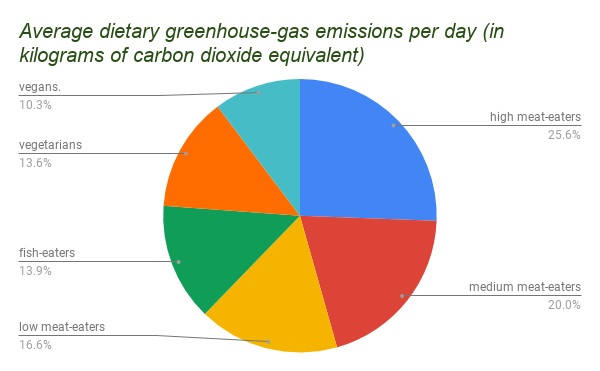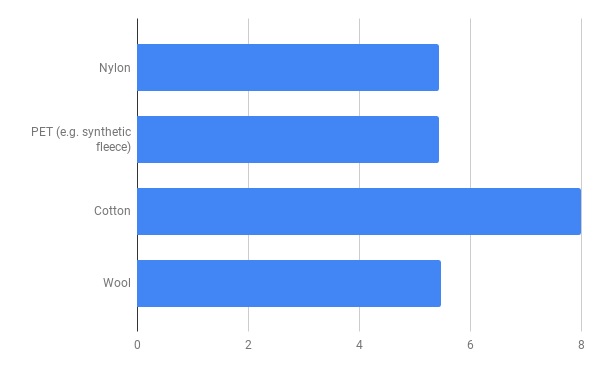Jan 05, 2026
Jan 05, 2026

In easy words, “the total amount of greenhouse gases produced to directly and indirectly support human activities, usually expressed in equivalent tons of carbon dioxide (CO2).” This accounting approach compares how much people demand compared to what the planet can renew. The main influences on carbon footprints include population, economic output, and energy and carbon intensity of the economy.
In most cases, the total carbon footprint cannot be exactly calculated because of inadequate knowledge of and data about the complex interactions between contributing processes, including the influence of natural processes that store or release carbon dioxide. For this reason, Wright, Kemp, and Williams, have suggested to define the carbon footprint as:
“A measure of the total amount of carbon dioxide (CO2) and methane (CH4) emissions of a defined population, system or activity, considering all relevant sources, sinks and storage within the spatial and temporal boundary of the population, system or activity of interest. Calculated as carbon dioxide equivalent using the relevant 100-year global warming potential (GWP100).”
When fossil fuels burn, they emit greenhouse gases like CO2 that contribute to global warming, resultant in non stop chain of environmental hazards like pollution, ice melting, temperature rising, green land loss, floods, tsunamis and spread of diseases by inventions of new germs.
It is really important to calculate carbon foot print of living and non living things like industries and other things like car etc. By doing do so some one start by calculating their carbon footprint to set a benchmark — like a weigh-in before a diet. A carbon footprint is simply a figure — usually a monthly or annual total of CO2 output measured in tons.
Since the Industrial Revolution, human sources of carbon dioxide emissions have been growing. Human activities such as the burning of oil, coal and gas, as well as deforestation are the primary cause of the increased carbon dioxide concentrations in the atmosphere.
A carbon footprint is measured in tonnes of carbon dioxide equivalent (tCO2e). The carbon dioxide equivalent (CO2e) allows the different greenhouse gases to be compared on a like-for-like basis relative to one unit of CO2.
This over-accumulation of greenhouse gases in the atmosphere serves to trap heat on our planet. Thus, the car has a definite carbon footprint. The overabundance of carbon dioxide that gets trapped in Earth’s atmosphere can lead to numerous problems. Since the Industrial Revolution, human sources of carbon dioxide emissions have been growing.
Carbon emissions contribute to climate change, which can have serious consequences for humans and their environment. Burning of fossil fuels releases carbon dioxide and other greenhouse gases (GHGs). These carbon emissions raise global temperatures by trapping solar energy in the atmosphere.
Fossil fuels are high carbon sources of electricity while other generation sources are low carbon. Coal is the most carbon intensive, followed by oil and then natural gas. A carbon footprint is defined as: The total amount of greenhouse gases produced to directly and indirectly support human activities, usually expressed in equivalent tons of carbon dioxide (CO2). When we heat our house with oil, gas or coal, then we also generate CO2.
The average annual carbon dioxide emissions per person, scientists found, was 20 metric tons, compared to a world average of four tons. But the “floor” below which nobody in the U.S. can reach, no matter a person’s energy choices, turned out to be 8.5 tons, the class found.
An indvisual is contributing in production of GHGs by Consumption and production of food, way of transmission (road, air, foot, bicycle,rail and sea etc.), textile, housing method, electricity consumption, way of living or in short by doing each and every little step of movement or activity so continuously printing its carbon foot print in the environment and doing its role in climate change. collectively all indvisuals with all their activities giving a major carbon ratio to the surrounding environment. The carbon footprint calculations are based on a consumption based approach using a Multi-Regional Input-Output database, which accounts for all Greenhouse Gas (GHG) emissions in the global supply chain and allocates them to the final consumer of the purchased commodities.
The carbon footprint of U.S. households is about 5 times greater than the global average. For most U.S. households the single most important action to reduce their carbon footprint is driving less or switching to a more efficient vehicle
Electricity is responsible for roughly 37% of Carbon Dioxide emissions. Coal production has been refined to greatly reduce carbon emissions; since the 1980s, the amount of energy used to produce a ton of steel has decreased by 50%.
Average dietary greenhouse-gas emissions per day (in kilograms of carbon dioxide equivalent) were:
7.19 for high meat-eaters
5.63 for medium meat-eaters
4.67 for low meat-eaters
3.91 for fish-eaters
3.81 for vegetarians
2.89 for vegans.

Chart: Average dietary greenhouse-gas emissions per day (in kilograms of carbon dioxide equivalent)
The precise carbon footprint of different textiles varies considerably according to a wide range of factors.
Cotton: 8
Nylon: 5.43
PET (e.g. synthetic fleece): 5.43
Wool: 5.48

Chart: A precise carbon footprint of different textiles
08-Dec-2018
More by : Dr. Naseem Sheikh